A taste of history
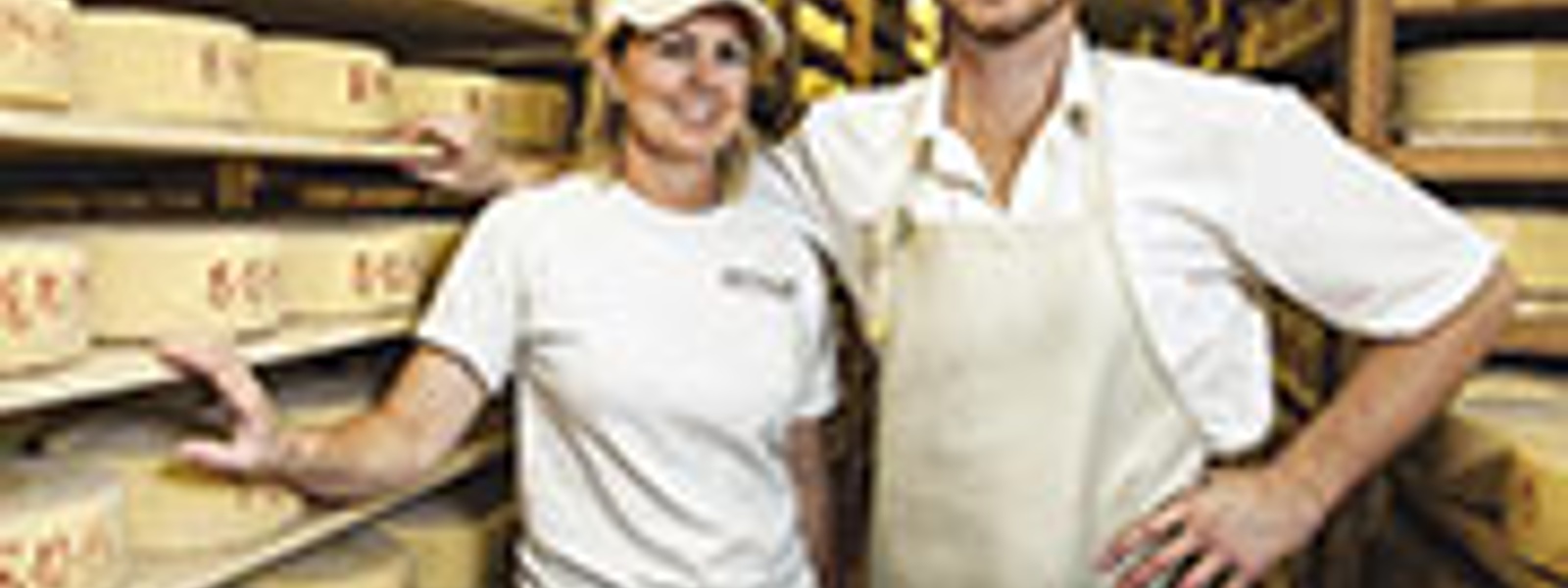

Karen Bianchi-Moreda and son Joe Moreda work together in crafting Old World-style cheese, which is aged for at least six months in climate-controlled rooms.
Cheese holds a special place in Karen Bianchi-Moreda's heart.
"My grandparents always had cheese under the glass dome on the counter, like most old Italian families," she said.
The cheese itself was delicious, she said, "but the memories of sitting around the table, talking and telling stories, was what was special about it. I want those days to continue on to the next generation."
And they are. Today, Bianchi-Moreda works alongside her 25-year-old son, Joe Moreda, handcrafting Old World, Italian-style cheeses on the family's 640-acre dairy in tiny Valley Ford (population 147, about 5 miles from Bodega Bay). More than 100 restaurants, wineries, specialty stores and farmers markets in Northern California—and additional locations as distant as New York—feature products from Valley Ford Cheese Co.
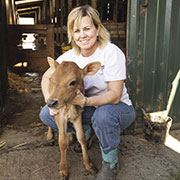
Karen Bianchi-Moreda's family has owned and operated the same dairy for nearly 100 years.
While cheesemaking is new for this family, the dairy business isn't. They've owned and operated the same dairy for nearly 100 years. Bianchi-Moreda's great-grandparents came from Northern Italy in 1918 and purchased the land, and it has remained in the family ever since.
"We all grew up on the dairy and learned firsthand about hard work," she said.
After college, Bianchi-Moreda worked as a volleyball coach, athletic director and PE teacher at the local high school, while father Paul Bianchi and brother Steve ran the family business—raising cows and selling the milk. She helped by managing administrative tasks.
Eventually, though, the lure of the land proved too strong.
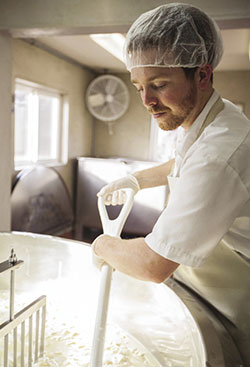
Joe Moreda makes cheese using milk from the family dairy.
"We wanted to make a value-added product that would allow me to come back full time to the dairy, so I could find my little niche," Bianchi-Moreda said. She found it re-creating the cheese of her childhood.
As fresh as it can be
Valley Ford Cheese is farmstead cheese, meaning it's made from milk that comes straight from the 500 Jersey cows on the family dairy.
"The concept is similar to an estate wine, where all the grapes for the wine come from the vineyard's own property," Bianchi-Moreda explained. She and her son make two Asiago-style cheeses—much like Parmesan—and a softer, creamier fontina in a cheese plant literally steps from the milking barn.
"It's a matter of only hours from when the milk comes from the cow to when we start turning it into cheese," Moreda said.
But it took months of trial and error to achieve the cheese of her memories. In fact, Bianchi-Moreda started making small batches six years ago, carrying milk from the dairy "old-school style" in 10-gallon cans. Son Joe was studying dairy science at Cal Poly, San Luis Obispo, back then, and she went too, for a five-day course in artisan cheesemaking. Each returned with more knowledge—and inspiration.
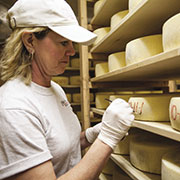
Karen Bianchi-Moreda hand-paints the dates on rinds for a personal touch.
Aging gracefully
Cheesemaking is an early-morning business. Moreda, plant operations manager and head cheesemaker, is up by 4:30 a.m. to ensure they reach an ambitious goal: 1,200 pounds of cheese in five days.
"Having somebody young, the energy level, the knowledge that he brings in—and then I come in with a different way—it actually creates a great dynamic," said Bianchi-Moreda, who also manages public relations and marketing for the business.
After a multistep process to transform the dairy's fresh milk into cheese, the mother-son team places it in a climate-controlled aging room. Aging is the ripening of the cheese and, with great care, they flip and rotate each wheel daily. Estero Gold is aged for six months, while Estero Gold Reserve ages for 18 months.
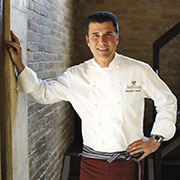
Chefs Michael Chiarello, above, and Brandon Guenther, below, create recipes with cheese from Valley Ford Cheese Co.
These cheesemakers pay close attention to detail in order to age the cheese properly and also attain a rustic, textured look. This includes monitoring the aging room's temperature and humidity to promote a natural rind on the outside of the cheese. Bianchi-Moreda hand-paints the dates on the rind with red food coloring for a personal touch.
"I'm nostalgic when it comes to our family history, so it made sense to me to have my cheeses reflect the Old World-style cheeses," she said.
In the spotlight
Valley Ford Cheese serendipitously caught Michael Chiarello's attention a few years ago. The well-known chef and television host, with restaurants in San Francisco and Napa Valley, was at a local restaurant when recognized by a friend of Bianchi-Moreda's family.
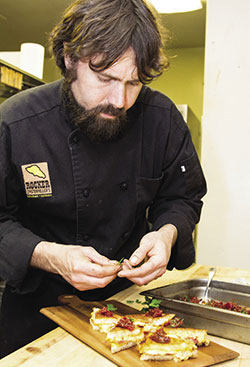
The friend sent some texts, Chiarello recalled, "and the next thing I know, Karen literally walks in with a bag of cheese."
The layers of flavors impressed the chef—and so did the family behind the cheese.
"I grew up in Turlock; I'm a farm boy," he said. "I love personal stories. I love when people are doing something for their family, with their family."
Coming from a cheesemaking family—and knowing the value of the chef/farmer relationship—Chiarello visited the dairy that day. Soon he was serving Estero Gold Reserve on pasta dishes and with prosciutto and salami plates.
"When I bring cheese over to his restaurant, he makes you feel like you are such a contributor," Bianchi-Moreda said.
But she credits local residents for giving Valley Ford Cheese Co. its start.
Rocker Oysterfeller's, a Southern-inspired restaurant in Valley Ford, was the first to use the cheese.
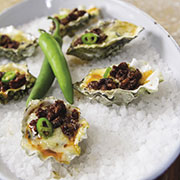
The cheeses accent oysters at Guenther's Rocker Oysterfeller's restaurant.
"It's consistent, it has a beautiful balance, nice sharp notes to it, a good, deep, nutty flavor—all those flavors really come through," said chef/owner Brandon Guenther.
He uses Estero Gold in cheese grits and pimiento cheese, a Southern staple and go-to sandwich spread traditionally made of grated cheddar cheese, mayonnaise and diced pimiento peppers.
"(The Estero Gold) created such a unique and incredible pimiento cheese that we kept running with it," Guenther said. He and Bianchi-Moreda collaboratively make and market the product at farmers markets, where it consistently sells out.
As the business grows, Bianchi-Moreda's son Jim, a Cal Poly graduate working as a herdsman for a season on a New Zealand dairy, will soon join the family's dairy and cheesemaking business. Older brother Joe welcomes the help.
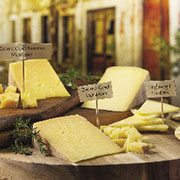
"The fact that we are statewide and nationwide, it's just a crazy thought," Moreda said. "But this is just the beginning. There's definitely more to come."
Jennifer Harrison
info@californiabountiful.com
Choosing cheese
Five hundred cheese varieties are recognized by the International Dairy Foundation. Valley Ford Cheese Co. cheeses resemble two Italian styles: Asiago and fontina.
Asiago: Named for the town in Italy where the cheese was first produced, Asiago is similar to Parmesan. The semi-hard, aged cheese is often grated over soups, salads and sauces.
Fontina: A silky, creamy cheese known for its nutty or woody flavor, this "anytime cheese" is ideal on an appetizer plate, in a sandwich or as a pizza topping.

